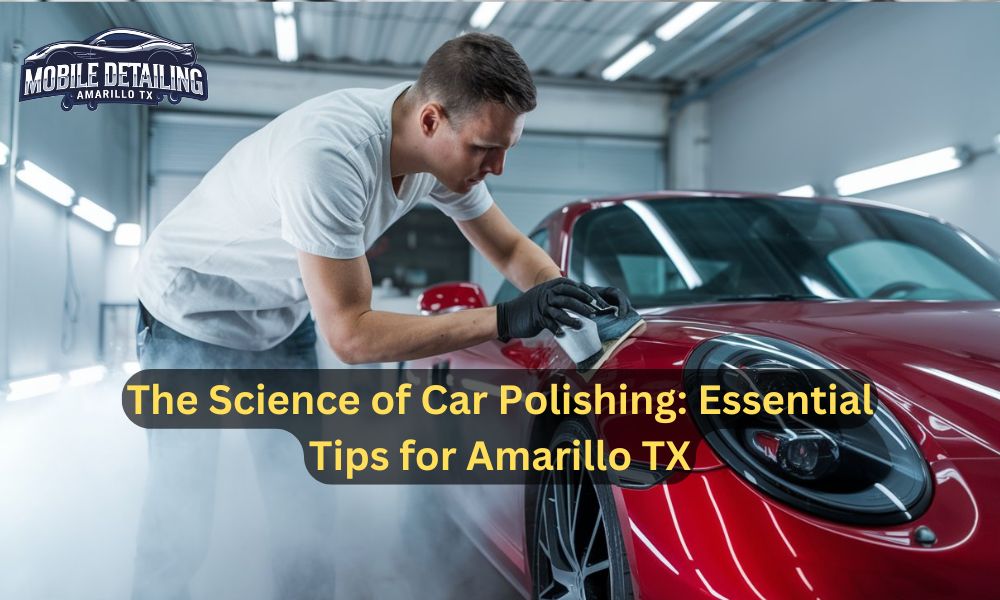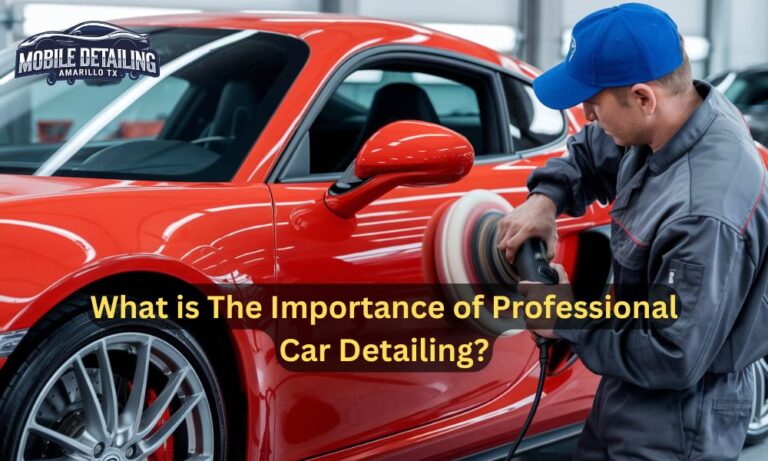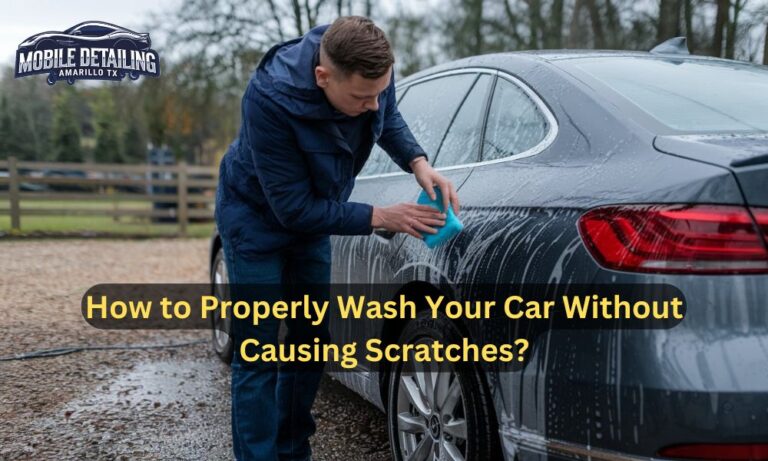Car polishing is a vital step in vehicle maintenance, particularly for those looking to preserve the aesthetics and longevity of their vehicle’s paint. Whether you’re in Amarillo, TX, or elsewhere, understanding the science behind car polishing can help you make better decisions about your vehicle’s care. In this article, we will break down the intricacies of car polishing, explore how it works, and highlight the benefits of incorporating it into your car care routine.
What Is Car Polishing?
Car polishing is the process of using an abrasive compound to remove imperfections from a car’s paint, such as scratches, oxidation, water spots, and swirl marks. The goal is to restore the car’s surface to a smooth and reflective state by removing the top layer of damaged paint. Polishing is usually performed before waxing or sealing, which helps protect the vehicle’s newly polished surface.
While the process seems simple, it involves a blend of chemistry, mechanical action, and experience. Car polishing requires precision to ensure that only the right amount of paint is removed without causing damage to the clear coat or exposing the primer underneath.
How Car Polishing Works
To understand how car polishing works, it’s important to grasp the concept of paint layers. Modern cars generally have a multi-layered paint system:
- Clear Coat: The outermost layer, which is transparent and protects the coloured paint beneath.
- Base Coat: The coloured layer that gives the car its appearance.
- Primer: A bonding agent between the base coat and the car’s body.
Car polishing focuses on the clear coat, where most of the minor scratches and swirl marks reside. The goal of polishing is to “cut” into this clear coat and remove a minuscule layer to eliminate imperfections and create a smooth, reflective surface.
Abrasives and Their Role
At the heart of car polishing is the abrasive material within the polishing compound. These abrasives come in varying levels of coarseness, depending on the level of correction needed. Polishing compounds are designed to break down into smaller particles as they are worked into the paint, gradually transitioning from a coarse to a fine polish. This process leaves behind a smoother surface.
Choosing the right level of abrasive is key to achieving optimal results. Too coarse an abrasive may cut too deep, while too fine an abrasive may not be effective in removing deeper imperfections.
Heat Generation
When polishing, heat is generated due to friction between the polishing pad and the paint surface. This heat softens the clear coat slightly, making it easier for the abrasives to remove paint. However, if too much heat is generated, it can cause damage, such as burns in the clear coat, especially in areas where the paint is thinner.
Buffing Machines vs. Hand Polishing
Car polishing can be done either by hand or with the help of a machine. Machine polishers, such as rotary or dual-action polishers, provide more consistent results and are generally more effective at removing deep imperfections. However, they require more skill to avoid damaging the paint, particularly in the case of rotary polishers, which generate more heat.
Hand polishing, while less effective for heavy correction, can be sufficient for minor touch-ups and is less risky for beginners since it generates less heat and allows for more controlled application.
Types of Car Polishing Compounds
Different types of polishing compounds serve different purposes. Some are designed for more aggressive correction, while others are meant for fine finishing. Below are the main types of polishing compounds:
1. Cutting Compound
Cutting compounds are highly abrasive and are used for removing heavy imperfections like deep scratches and oxidation. They are typically followed by finer polishing compounds to remove the micro-scratches they leave behind.
2. Polishing Compound
These compounds are less abrasive than cutting compounds and are designed to remove moderate scratches, swirl marks, and light oxidation. They are the most commonly used for routine polishing.
3. Finishing Compound
Finishing compounds are ultra-fine abrasives that are used after cutting and polishing to give the paint a mirror-like finish. They are ideal for eliminating the tiny scratches left behind from previous polishing stages.
Benefits of Car Polishing
Car polishing offers numerous benefits for maintaining your vehicle’s appearance and protecting its value.
1. Restores Paint Clarity
Polishing removes oxidation and surface contaminants, restoring the clarity and depth of the paint. This makes the car look fresh and well-maintained, even after years of exposure to the elements.
2. Removes Scratches and Imperfections
While not all scratches can be completely removed, polishing can significantly reduce the visibility of light scratches, swirl marks, and other imperfections on the car’s surface.
3. Improves Resale Value
A well-polished car looks newer and better maintained, which can translate to a higher resale value. Polishing demonstrates to potential buyers that you’ve taken care of your vehicle, which can give them confidence in their purchase.
4. Prepares Surface for Protection
Polishing is an important step before applying a wax or sealant. It creates a smooth, clean surface that allows these protective layers to bond better, providing longer-lasting protection for the paint.
Frequency of Car Polishing
One of the common questions car owners in Amarillo, TX, have is how often they should polish their vehicles. The frequency of polishing depends on various factors, including:
- Weather Conditions: In hot and sunny climates like Amarillo, where UV exposure is high, the clear coat can degrade faster, which may necessitate more frequent polishing.
- Type of Use: If your car is exposed to harsh conditions like frequent off-road driving or bird droppings, you may need to polish it more often.
- Type of Paint: Softer paints may require more frequent polishing as they are more prone to scratches, while harder paints can go longer without needing polish.
As a general rule of thumb, polishing a car 1-2 times per year is recommended. Over-polishing can wear down the clear coat and lead to damage, so it’s important to polish only when necessary.
DIY Polishing vs. Professional Services in Amarillo, TX
For car enthusiasts in Amarillo, TX, deciding whether to polish their cars themselves or take them to a professional detailing service is an important consideration. Both options have their pros and cons.
DIY Polishing
Polishing your car yourself can save money and allow you to work at your own pace. However, it requires a good understanding of the process and access to the right tools and products. If done incorrectly, DIY polishing can cause more harm than good.
Professional Polishing Services
Professional car polishers in Amarillo, TX, have the experience and tools to deliver superior results. They understand the intricacies of different paint types and can safely polish your car without the risk of damage. While more expensive than DIY, the results from a professional service often justify the cost.
Conclusion
The science of car polishing goes beyond merely making a car shine; it involves understanding paint layers, abrasives, heat generation, and the different types of compounds that cater to various levels of paint correction. Whether you’re a DIY enthusiast or prefer professional detailing services in Amarillo, TX, knowing the principles behind car polishing can help you maintain your vehicle’s appearance, protect its value, and ensure it remains in top condition for years to come.





